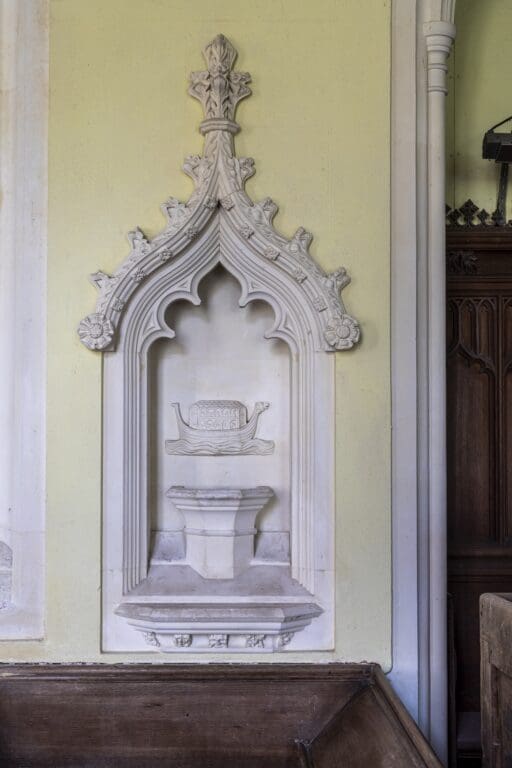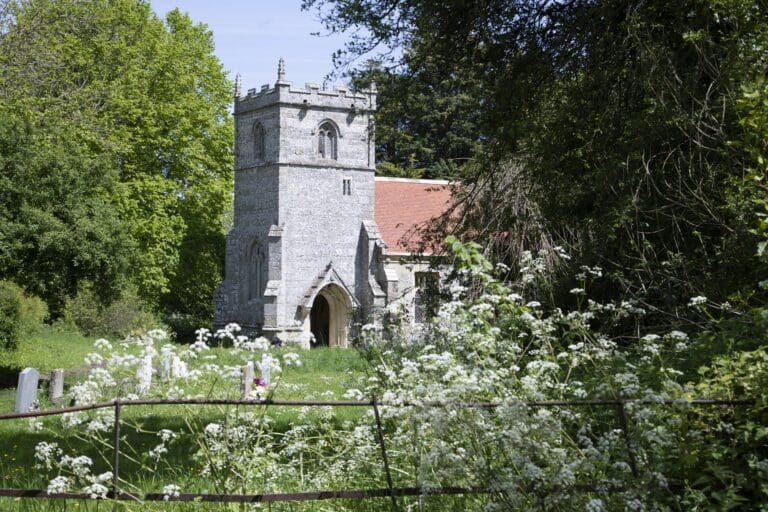
Perhaps that’s unsurprising, since two of the architects were more comfortable designing country houses.
St Mary’s is both peculiar and picturesque. Set in to the chalkland of the Cranborne Chase, the design combines a late medieval tower with a nave, transept and apse built in stages between 1852 and 1875. Nikolaus Pevsner described St Mary’s as ‘… a Georgian space in Perpendicular form, long, uniform, well-lit – it might be a schoolroom.’
The identity of the 19th century architect was unknown until recent research by Michael Hill revealed evidence, suggesting that a distinguished trio were responsible. Hill credits the rebuilding of the nave of 1852 and the elaborate ‘flamboyant’ west door surround, complete with sculpted bishop’s mitre, to P.C. Hardwick, son of the designer of the much-lamented Euston Arch. William Burn, designer of country houses, did some work apparently in 1854, while MacVicar Anderson, also better known for his houses, is credited with the two transepts. The shorter south transept was almost certainly the family chapel for the residents of Crichel House, and that to the north, which is larger and shielded by a screen, intended as a schoolroom.
A particularly interesting feature of the church is the collection of ceilings, which strongly reinforce the secular feel that Pevsner noted – timber panels with reticulated tracery that appear straight out of a fashionable drawing room.
The history of the church is intertwined with the Crichel Down Affair, the Bloomsbury Group and the gay rights movement in the 1960s.
In recent years the church was a victim of metal theft from the roofs, which allowed water to seep through, and stain and rot parts of the timber, as well as turning the walls algal green. In 2021, funding via the Culture Recovery Fund allowed us to install some new electrics and lighting, and repair and restore the interior. Paint research revealed traces of the original late-Georgian colour scheme beneath the garish purple, orange and blue décor from the 1980s. Talented craftspeople painstakingly reinstated the original palette, including the wood-grained ceilings, using traditional techniques.




The button below links to church information on another website.